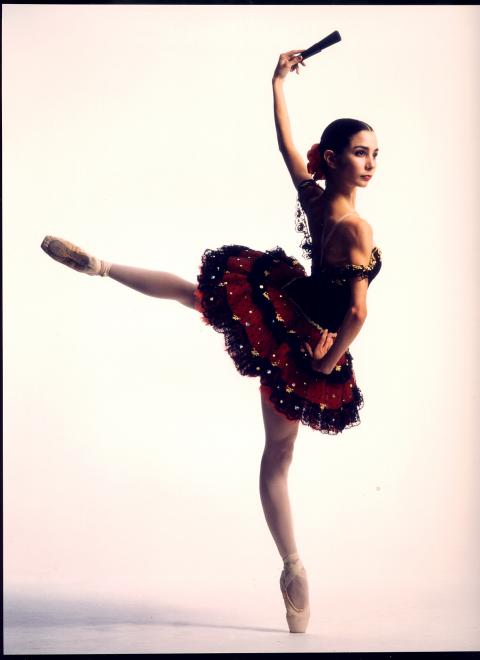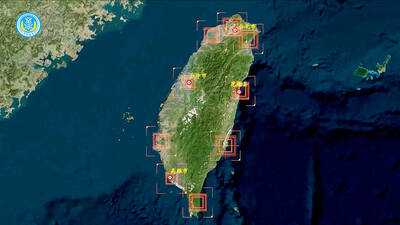The 5th International Ballet Star Gala at the National Theater was a delight from start to finish on Saturday night, whether the bravura turns in classics such as the “Black Swan pas de deux” from Swan Lake, the Don Quixote pas de deux or the slew of enchanting new works by young choreographers such as Briton David Dawson and Vietnamese Van Le Ngoc.
All of the dancers were in fine form, but Royal Ballet principals Tamara Rojo and Federico Bonelli sizzled as the impassioned, impetuous lovers in the pas de deux from Sir Kenneth MacMillian’s Manon — with some of the best kissing ever seen on a ballet stage — while American Ballet Theater principals Julie Kent and Marcelo Gomes were all tortured anguish as the same characters years later in John Neumier’s Lady of Camellia. Nobody does suppressed volcanic emotions better than Kent. She and Gomes were equally impressive in James Kudelka’s very modern Cruel World.
It was wonderful to see Yumiko Takeshima and Raphael Coumes-Marquet, both principals with the Dresden State Ballet, return for a second gala appearance in a Dawson piece, this time On the Nature of Daylight, as well as William Forsythe’s sharply angular Slingerland Pas de Deux.

Photo courtesy of IBSG
There has been a lot of critical writing over the past decade or two about the slow death of classical ballet as modern ballet choreographers move further away from the lyricism of their roots, but the quiet beauty of Dawson and Van Le Ngoc’s pieces, as well as Krystof Pastor’s Wie Lange Noch? give one hope, while ballerina Elena Kuzmina proved she can choreograph short dramatic show-stoppers with her Leda and the Swan, partnered by the amazing Igor Kolb.
Wang Tzer-shing’s (王澤馨) has an enviable track record of five International Ballet Star Gala under her belt and dancers around the world are lining up to be included on her guest list. It would be nice if the corporate world would show a bit of interest and cough up some sponsorship to allow her to do more.
Up in the Experimental Theater on Saturday afternoon, dancer/choreographer Chou Shu-yi (周書毅) kept his audience’s attention during his solo show Faceless (我/不要/臉), helped in no small part by the ingenious set and sculptures developed by Luxury Logico (豪華朗機工).
Chou was sitting in a high chair on a large, elevated platform as the audience took its seats, his head obscured by a giant white drop cloth. When the cloth fell, Chou’s head appeared, crowned by an Andy Warhol-ish white wig, while his face was accented by a pair of large black sunglasses and a rictus-like grin.
He spent the hour-long show exploring the confines of his world, and his existence, but the platform turned out to be a Chinese puzzle box of secret panels, hidden windows and lots of surprises.
Faceless is very clever, but it is more performance art than dance. Most of Chou’s movements were hand and arm ticks, body rolls, scuttles, slides and stretches. He is such a wonderful dancer it is a shame he didn’t dance more.
The piece was produced by the all-male dance troupe Horse (驫舞劇場), of which Chou is a founding member, with a soundscape by frequent collaborator Yannick Dauby. The performance showed once again that Horse is more than willing to tackle big challenges.
Meanwhile, the Universal Ballet of Korea’s performance of Shim Chung (沈清) at the National Theater on Tuesday night was a revelation.
Hwang Hey-min danced the lead role of Shim Chung and she was a delight. Tiny, and looking as light as a feather, she just floated across the stage. She also has the acting chops for the mime that propels the story line without appearing too hammy.
The sets, which were overhauled two years ago, were a visual feast: beautifully detailed backdrops of a village setting in Act I and royal court garden in Act III, while the eye-popping underwater kingdom of the Sea Dragon king in Act II was magnificent, as were the brilliantly colored sea creature costumes. And the video projections used to create the raging sea during the storm scene were so effective you could almost smell the salt water.
The corps de ballet was impressive in the opening scene, especially the men who danced the roles of first sailor (Dai Jiyan) and second sailors (Seo Dong-hyun, Kang Min-woo, Dong Jia-di and Lee Dong-tak).
However, the ballet as a whole remains a vehicle for its leading dancer, with much of the choreography for the soloists and corps too pedestrian. Shim Chung is a melding of an old Korean folktale and classical Western ballet. But the Universal Ballet today is a far cry from the troupe it was in 1986, when Shim Chung was created. The entire company is stronger and better trained, and its dancers — and audiences — deserve more sophisticated choreography that can challenge the dancers and display the troupe’s depth. Act II especially needs to be revamped — the Sea Dragon king’s court is a fantasy land and the divertissements should be on a par with the Arabian, Chinese and Russian and Sugar Plum Fairy dances from The Nutcracker or the Bluebirds and Lilac Fairy from Sleeping Beauty.

The People’s Republic of China (PRC) last week offered us a glimpse of the violence it plans against Taiwan, with two days of blockade drills conducted around the nation and live-fire exercises not far away in the East China Sea. The PRC said it had practiced hitting “simulated targets of key ports and energy facilities.” Taiwan confirmed on Thursday that PRC Coast Guard ships were directed by the its Eastern Theater Command, meaning that they are assumed to be military assets in a confrontation. Because of this, the number of assets available to the PRC navy is far, far bigger

The 1990s were a turbulent time for the Chinese Nationalist Party’s (KMT) patronage factions. For a look at how they formed, check out the March 2 “Deep Dives.” In the boom years of the 1980s and 1990s the factions amassed fortunes from corruption, access to the levers of local government and prime access to property. They also moved into industries like construction and the gravel business, devastating river ecosystems while the governments they controlled looked the other way. By this period, the factions had largely carved out geographical feifdoms in the local jurisdictions the national KMT restrained them to. For example,

The remains of this Japanese-era trail designed to protect the camphor industry make for a scenic day-hike, a fascinating overnight hike or a challenging multi-day adventure Maolin District (茂林) in Kaohsiung is well known for beautiful roadside scenery, waterfalls, the annual butterfly migration and indigenous culture. A lesser known but worthwhile destination here lies along the very top of the valley: the Liugui Security Path (六龜警備道). This relic of the Japanese era once isolated the Maolin valley from the outside world but now serves to draw tourists in. The path originally ran for about 50km, but not all of this trail is still easily walkable. The nicest section for a simple day hike is the heavily trafficked southern section above Maolin and Wanshan (萬山) villages. Remains of

Shunxian Temple (順賢宮) is luxurious. Massive, exquisitely ornamented, in pristine condition and yet varnished by the passing of time. General manager Huang Wen-jeng (黃文正) points to a ceiling in a little anteroom: a splendid painting of a tiger stares at us from above. Wherever you walk, his eyes seem riveted on you. “When you pray or when you tribute money, he is still there, looking at you,” he says. But the tiger isn’t threatening — indeed, it’s there to protect locals. Not that they may need it because Neimen District (內門) in Kaohsiung has a martial tradition dating back centuries. On